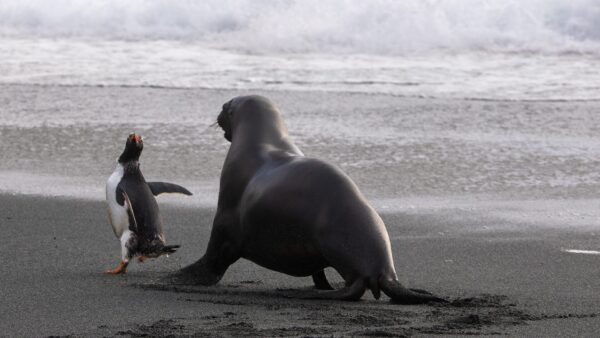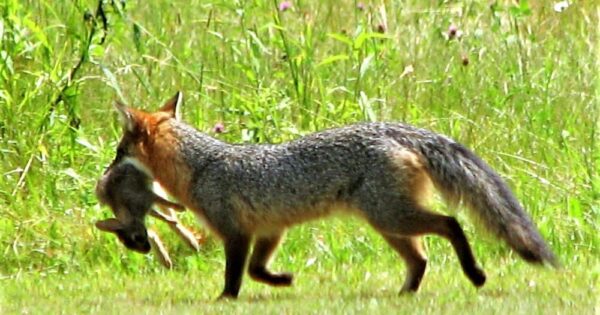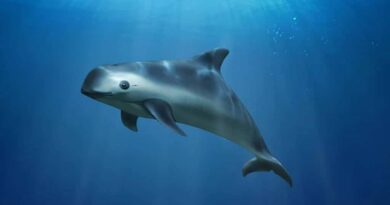The Intricate Balance: Predator and Prey in the Natural World
The predator-prey dynamic is a cornerstone of natural ecosystems, driving evolutionary changes and maintaining ecological balance. This relationship is a complex dance of survival that showcases the incredible adaptations and strategies animals develop. By delving into these interactions, we gain a richer understanding of how life thrives and sustains itself.
Defining Predator-Prey Interactions:
At the heart of ecosystems, the predator-prey interaction is a fundamental biological relationship where predators hunt and consume prey. This interaction is essential for regulating populations, fostering biodiversity, and influencing evolutionary paths.
The Importance of Predators:
Predators are crucial for keeping prey populations in check, preventing overpopulation and the resulting strain on resources. This regulation helps maintain a balanced and healthy ecosystem. Predators often target the weaker members of prey populations, which can lead to stronger, healthier groups.
The Role of Prey:
Prey species provide the necessary sustenance for predator populations. Through their behaviors and reproductive strategies, they ensure their survival despite the constant threat of being hunted. Predators push prey species to evolve various adaptations for survival.
Adaptations: The Evolutionary Arms Race
Both predators and prey have evolved a fascinating array of adaptations that enhance their chances of survival in the ongoing battle between hunter and hunted.
Predator Adaptations:
- Stealth and Camouflage: Predators like tigers and leopards use camouflage to blend into their environments, allowing them to approach their prey undetected.
- Speed and Power: Many predators rely on physical prowess. The cheetah’s incredible speed enables it to chase down fast-moving prey, while eagles have sharp talons and keen eyesight to catch unsuspecting prey from the sky.
- Strategic Hunting: Predators have developed sophisticated hunting methods. Packs of wolves coordinate their efforts to hunt larger animals, while spiders construct elaborate webs to trap insects.

Prey Adaptations:
- Camouflage and Mimicry: Prey animals often blend into their surroundings to avoid detection. For example, the stick insect mimics twigs to evade predators. Some species use mimicry to appear more dangerous or unappetizing.
- Escape Tactics: Many prey animals have evolved to be swift and agile, such as antelopes that use zigzag running to escape predators.
- Defensive Mechanisms: Physical defenses like quills, shells, and venom are common. Porcupines use their quills to deter attackers, while certain frogs secrete toxins that make them unpalatable. Behavioral defenses, like living in herds, enhance vigilance and collective protection.
Ecosystem Impacts of Predator-Prey Dynamics:
These interactions shape ecosystems in profound ways, affecting population sizes, genetic diversity, and community structures.
Population Regulation:
Predators help keep prey populations within sustainable limits, preventing the overconsumption of resources and ensuring ecosystem stability.
Evolutionary Pressures:
The constant interaction between predators and prey leads to an evolutionary arms race, driving species to continually develop better survival strategies. This results in a rich tapestry of biodiversity and complex adaptations.
Trophic Cascades:
Changes in predator populations can trigger trophic cascades, affecting entire ecosystems. For example, the reintroduction of wolves to Yellowstone National Park altered the behavior of prey species, which in turn affected vegetation and other wildlife, restoring ecological balance.
Human Influence on Predator-Prey Relationships:
Human activities have dramatically altered predator-prey dynamics, often leading to ecological imbalances.
Disruption and Conservation:
Habitat destruction, hunting, and climate change disrupt these natural relationships, often endangering both predator and prey species. Conservation efforts aim to protect and restore these populations through habitat preservation, anti-poaching initiatives, and rewilding projects.
Conclusion:
The predator-prey relationship is a dynamic and vital aspect of nature, driving evolution, maintaining ecological balance, and highlighting the incredible adaptability of life. By understanding and respecting these interactions, we can better appreciate the delicate balance of ecosystems and the importance of conserving biodiversity.
FAQs:
What defines a predator-prey relationship?
A predator-prey relationship is an ecological interaction where a predator hunts and consumes another organism, the prey. This relationship is fundamental for maintaining ecological balance and driving natural selection.
Why are predators crucial for ecosystems?
Predators play a vital role in regulating prey populations, preventing overpopulation, and ensuring that resources are not depleted. They help maintain biodiversity by culling weaker individuals, thus promoting a healthier and more resilient prey population.
How do prey species avoid predation?
Prey species employ various tactics to avoid being caught by predators, such as camouflage, mimicry, rapid escape behaviors, defensive mechanisms, and social behaviors like flocking or herding to enhance protection.
What adaptations do predators have to catch their prey?
Predators have evolved a range of adaptations, including camouflage for stealth, physical prowess like speed and strength, acute senses for detecting prey, and sophisticated hunting strategies to increase their success rates.
What happens when a predator is removed from an ecosystem?
Removing a predator can disrupt the ecological balance, often leading to prey overpopulation, resource depletion, and a decrease in biodiversity. This disruption can cause a trophic cascade, significantly altering the structure of the ecosystem.
What is a trophic cascade?
A trophic cascade is an ecological event triggered by the addition or removal of a top predator, causing a ripple effect through the food chain. This can lead to substantial changes in population sizes and behaviors of other species within the ecosystem.
How do human activities affect predator-prey dynamics?
Human activities such as deforestation, pollution, hunting, and climate change disrupt predator-prey relationships by reducing populations, altering habitats, and affecting resource availability, often leading to ecological imbalances.
Can you provide examples of predator-prey interactions?
Examples of predator-prey interactions include:
- Lions and gazelles in African savannahs.
- Wolves and moose in North American forests.
- Eagles and fish in aquatic environments.
- Snakes and rodents in various ecosystems.
- Praying mantises and insects in many habitats.
How do conservation efforts maintain predator-prey dynamics?
Conservation efforts aim to protect and restore predator and prey populations by preserving habitats, implementing anti-poaching measures, reintroducing species into their natural habitats, and promoting sustainable human practices to maintain ecological balance.
What role do apex predators play in ecosystems?
Apex predators are at the top of the food chain and lack natural predators. They are crucial for maintaining ecosystem structure and health by controlling the populations of other species, which helps regulate biodiversity and ecological stability.
Can prey adapt to new predators?
Yes, prey species can adapt to new predators through natural selection, developing new defensive mechanisms and behaviors over time to enhance their survival against unfamiliar threats.
How do scientists research predator-prey relationships?
Scientists study predator-prey relationships through field observations, population tracking, ecological data analysis, controlled experiments, and technologies like GPS tracking and camera traps to gather detailed insights into these interactions.
How does climate change impact predator-prey relationships?
Climate change affects predator-prey dynamics by altering habitats, shifting species distributions, changing migration patterns, and impacting the availability of resources, which can disrupt the balance and interactions between predators and prey.
How do predator-prey interactions support biodiversity?
Predator-prey interactions drive biodiversity by fostering the evolution of diverse adaptations and behaviors, supporting a variety of species within ecosystems, and maintaining the balance needed for healthy and resilient ecological communities.




